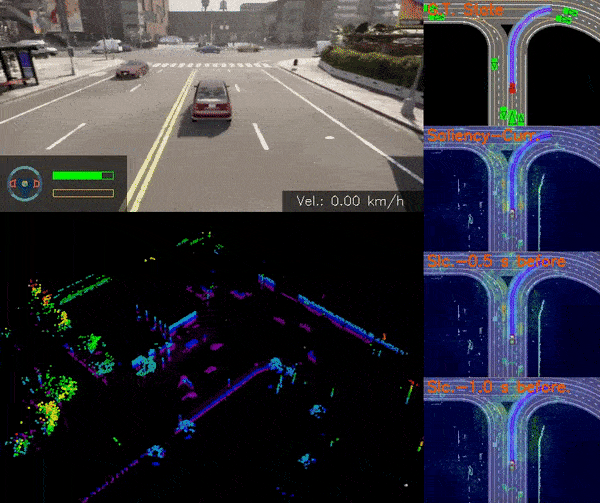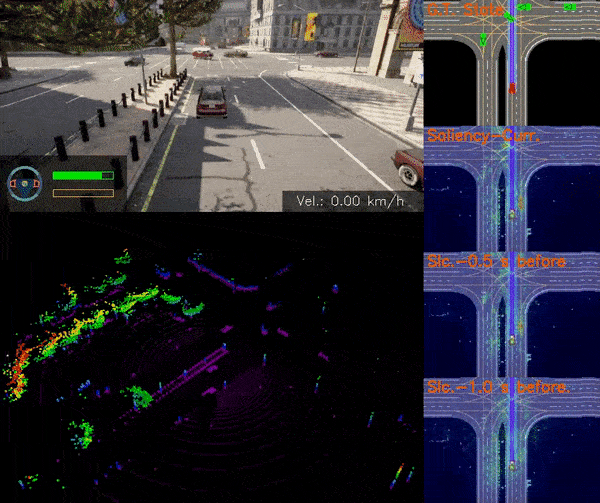Carl-Lead: Lidar-based End-to-End Autonomous Driving with Contrastive Deep Reinforcement Learning
Video
Alternative Video Link (Bilibili for Mainland China)
Autonomous driving in urban traffic at unregulated intersections is challenging, where dynamic occlusions and uncertain behaviors of other vehicles should be carefully considered. Traditional methods are heuristic and based on hand-engineered rules and parameters, but scale poorly in new situations. Therefore, they require a high labor cost to design and maintain rules for all foreseeable scenarios. Recently, deep reinforcement learning (DRL) has shown promising results in urban driving scenarios. However, DRL is known to be sample inefficient, and most previous works assume perfect observations, such as ground-truth locations and motions of vehicles, without considering noise and occlusions, yet this might be too strong an assumption for policy deployment. In this work, we use DRL to train lidar-based end-to-end driving policies that naturally consider imperfect observations. We further use unsupervised contrastive representation learning as an auxiliary task to improve the sample efficiency. The evaluation results reveal that our method, Carl-Lead, can be run in real time on different platforms, achieves higher success rates than the state-of-the-art lidar-based end-to-end driving network, better trades off for safety and efficiency than a carefully tuned rule-based method, and generalizes better in new scenarios.
Training Pipeline

Demonstration Videos
1. T-Left






2. T-Merge




3. Int-Cross






4. Int-Left




5. Five-Way (unseen)




6. Roundabout (unseen)

